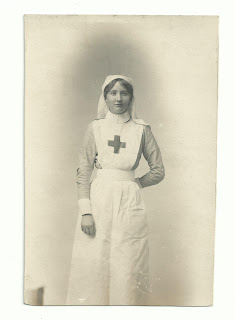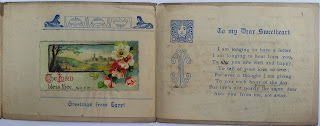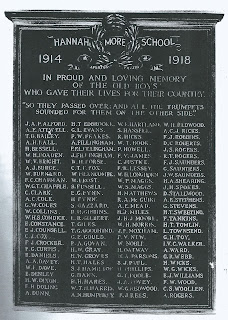 |
| Madge Sneyd-Kynnersley |
Madge, who lived in Weymouth with her mother and sisters, listed the year's big talking points: the offensive on the Somme; a change of government, with Lloyd George taking over from Asquith as Prime Minister; the introduction of conscription; and the big sea battle off Jutland which had caused much anxiety as she waited for news of her fiancé, a naval officer, who was involved in the battle. (He survived.) On the domestic front, Madge talked about the war work she and her sister had been involved in, and the trips she'd made away from home:
"In 1916 the war continued as usual. The big push and battle of the Somme, beginning on July 1st, was successful up to a point and though we did not advance very far, we took great toll of the Germans. In November or December the 'Wait and See Cabinet' resigned and Lloyd George and Bonar Law formed a new government of which much is hoped. In the autumn Roumania [sic] joined the allies but was rapidly over-run by the Germans etc who thus got possession of much-needed food supplies. At the Battle of Jutland - June 1st, the biggest naval battle in the annals of the world - we gained a victory at a great price.
"In December Germany proposed peace but the allies weren't having any - it seems possible indeed that the war will last forever. Conscription was made law from Feb 16th. I worked in the office of HM Torpedo Range [in Weymouth], only going away 3 times in the year, twice to London, once to Exeter. Kitty nursed and became a forwarding supervisor of that, Sylvie did Army Pay at Exeter and similar work at Dorchester. Rosie nursed at the Princess Christian Hospital [in Weymouth]."
Christmas Day in 1916 was a traditional family affair for the Sneyd-Kynnersleys, as described by Madge on December 25th:
"Church twice then dinner with Courtneys [family friends], Uncle Ted home. Big feast then sat and talked. Mother gave me lovely leather gloves lined with wool, Sylvie a lunch case, Kitty a manicure set and dictionary, Rosie a photo, Aunt Hilda 10/- [10 shillings], Aunt May 10/-, Aunt Flora 2/6, cousins ginger etc. Poor Kitty at Sutton Scotney [on nursing duty]."
Then it was back to work on Boxing Day, in a bleak, empty office at the torpedo testing range in Weymouth where Madge worked:
"Only me and Mr Bateman in office. Had to stay till 7 to do wages, very difficult. Home with Mr Prior in dark."
"Range till 7 again. Still alone. Went to Portland to check books - back in motor boat and home with Mr Prior."
 |
Rosie Sneyd-Kynnersley,
a WW1 nurse and Madge's sister
|
"Range till 1.15pm. Expected to work all afternoon though my half day off, so I explained I had seats for panto. They let me go and I lunched off curried chicken at the Trocadero with mother, then panto, 'Little Red Riding Hood', all of us and Courtneys - funny though bad and very vulgar."It's perhaps a good job that Madge couldn't look into the future and see that Britain still had almost two more years of war to endure. Not that she would have allowed herself to be downcast for too long. Madge was full of spirit and took a great interest in everything that went on around her. She was also full of fun and had a wicked sense of humour. All of this shines through in the diaries she kept during the Great War and you can read more of them in my books Letters from the Trenches and Weymouth, Dorchester and Portland in the Great War.
And now it's my turn to wrap up the year. Thankyou for reading my blog, I hope you've enjoyed reading my posts as much as I've enjoyed writing them. May I wish all my readers a happy and peaceful Christmas and I shall look forward to being with you again in the New Year.






























